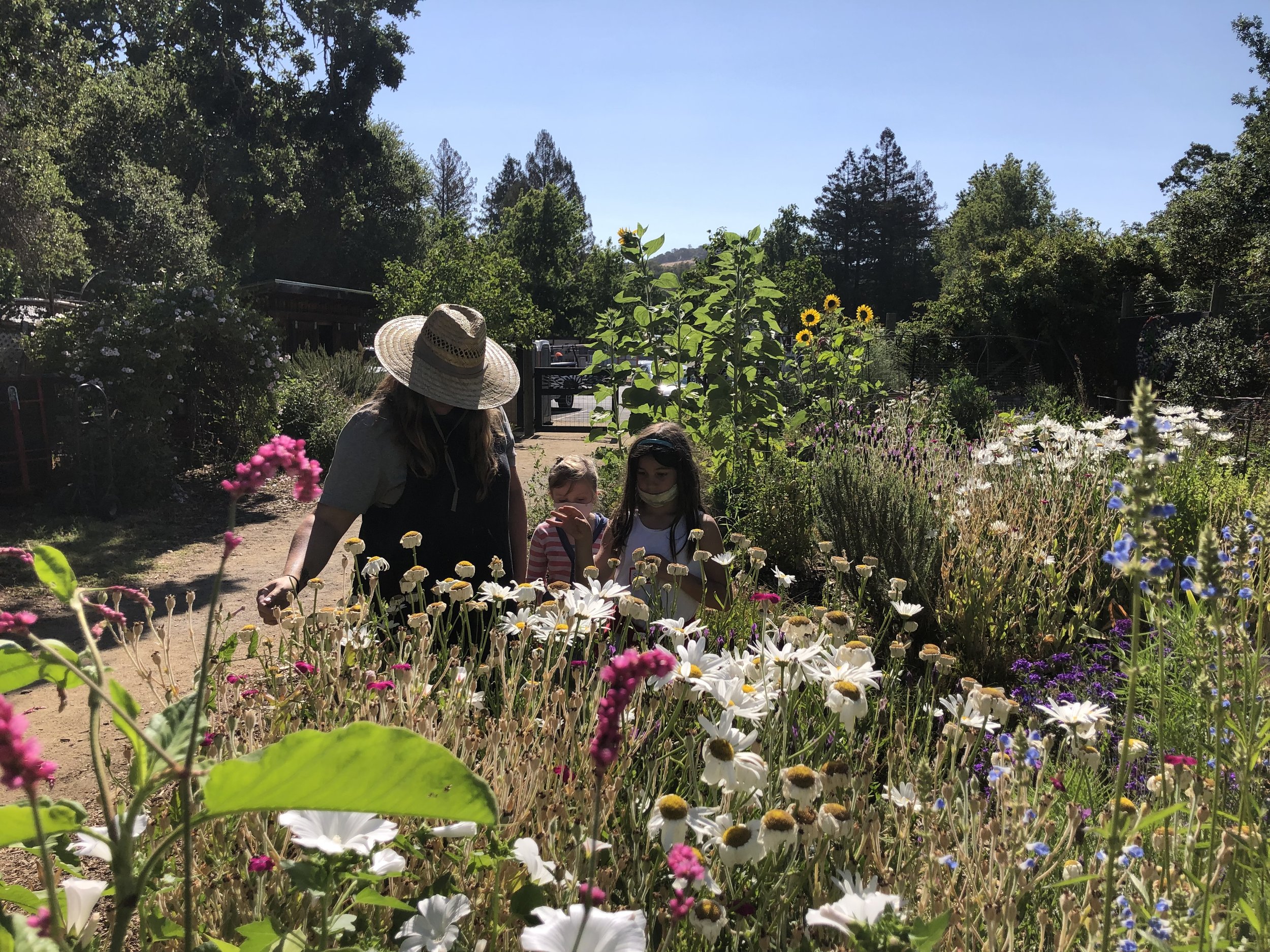Lessons from School Sustainability Leaders
The Power of School Gardens
“If we are going to ask kids to care about their effect on the Earth, they have to love it first.”
For many schools, the first seed of their school’s sustainability journey was creating a school garden—a living laboratory where students, staff, and even parents can connect with nature, engage in hands-on learning, often even grow food, and develop environmental awareness in an enjoyable way.
At Princeton Day School in New Jersey, Sustainability Coordinator Liz Cutler witnessed how garden initiatives can become a cornerstone of institutional environmental stewardship. "Our earliest large-scale success came from envisioning a teaching garden available to anyone interested in having an outdoor classroom and lab to enhance their curricular work," explains Cutler.
School gardens serve multiple purposes beyond just teaching environmental concepts—they create emotional connections to nature in an age where screen time increasingly dominates children's lives. As Cutler notes, "If we are going to ask kids to care about their effect on the Earth, they have to love it first." Gardens provide this crucial foundation by engaging students' senses through experiences like tasting freshly grown vegetables, observing beneficial insects, and nurturing plant life from seed to harvest. These tangible experiences foster a deeper understanding of our shared responsibility to care for the planet, as students witness firsthand how their actions directly impact living systems.
Schools with long-term student populations have a special opportunity to build enduring ecological relationships through regular garden interactions across multiple years. By integrating gardens into diverse curriculum areas—from science and math to art and literature—sustainability becomes woven into the fabric of school culture rather than treated as an isolated initiative, creating environmentally conscious students who carry these values throughout their lives. Gardens invite students to experience the natural world in ways that are immediate, joyful, and even meaningful.
See Princeton Day School’s incredible teaching garden here.
Host a Garden-Raising Event
The creation of Princeton Day School's learning garden shows how such projects can unite a school community.
Of the Princeten Day garden, Liz Cutler says, "A garden committee emerged. We wanted the feel of an old-fashioned barn raising, so we created a community garden-raising event”.
This unprecedented day brought together 200 volunteers—faculty, students, staff, alumni, and administrators—who constructed a 50 x 100 foot garden in just eight hours using their own tools, donated materials, and a small family grant. “The school's food service provider, FLIK, supported the effort by providing meals for volunteers while student musicians performed throughout the day. This collaborative approach fostered unexpected partnerships: the music department showcased student talent, while FLIK (the cafeteria service) received fresh produce for school lunches.
"The sense of community, school pride, and general good feeling that grew from this event has been a great boon to the Going Green initiative," notes Cutler.
An unexpected benefit of the garden-raising event was the emergence of a dedicated parent volunteer network. "We couldn't possibly have organized the garden-raising day without a strong group of dedicated and enthusiastic parent volunteers," Cutler says — and through the positive experience of garden-raising together, some of these parents evolved into a formalized monthly parent group called PDSeeds (Princeton Day Supporting Environmental Education and Discovery for Sustainability) that expanded the school's environmental initiatives. This "small but tireless group" tackled family-oriented sustainability challenges such as reducing car idling, promoting carpooling, and implementing litterless lunch programs. They served as crucial ambassadors, reinforcing at home what students were learning at school. As Cutler explains, "If students find resonance at home for what they are learning at school, it doubles the effectiveness and creates ripples in the larger community".
Imagine ways it can be used as a ‘Learning Garden’
Because teachers are understandably preoccupied with their responsibilities to meeting academic curriculum requirements, finding opportunities for students to engage with the school garden can be a challenge. Without clear links to learning objectives, even the most well-designed gardens can go underutilized.
At Princeton Day School, this was the initial hurdle. "We learned pretty quickly… that many teachers didn't know how to use the garden, nor did they want to use it," recalls Liz Cutler. Recognizing the need for dedicated support, the school secured funding to hire a part-time garden teacher, whose role it was to bridge the gap between the garden and the curriculum. "Nothing was forced into the curriculum," Cutler emphasizes, but rather that any interested faculty where supported in imaging how they might use it to enhance their already existing curriculum.
Within three years, the garden had become so embedded in school life that the garden coordinator, Pam Flory, was hired full-time, integrating garden-based learning across science, language arts, and social studies from prekindergarten through fourth grade. The initiative expanded further, adding middle school apprenticeships, family garden sessions, and harvest celebrations. “We are building an outdoor classroom that will contain a kitchen so students can learn the process from seed to table right there in the garden,” Cutler says. The impact even extended beyond the classroom—parents reported that their children were coming home asking for fresh arugula and Swiss chard, eager to shop at local farmers' markets and eat more greens.
Let students dig in
At San Domenico School, California (pictured below), the acre-sized garden is more than just a place to grow food—it’s an interactive classroom, a community gathering space, and a vibrant hub for hands-on learning. Shelley Flint, Sustainability Director and Garden Coordinator, has worked to ensure that students are immersed in every aspect of the growing process, from planting and harvesting to preparing and enjoying the food. “Kids aren’t just growing food—they’re part of the whole process. They tend to the soil, plant seeds, harvest crops, and make meals—it’s all about making learning hands-on.”




